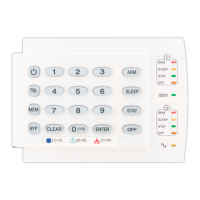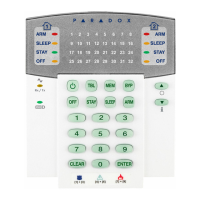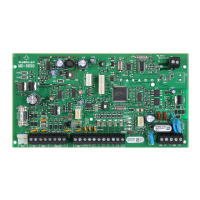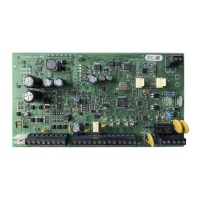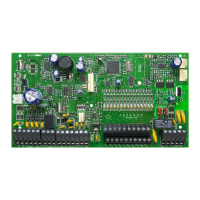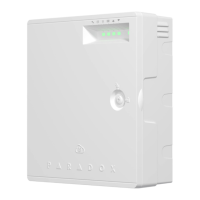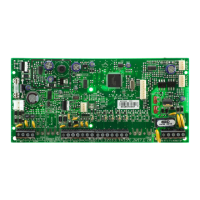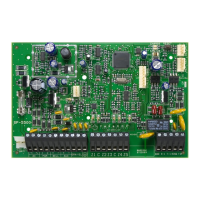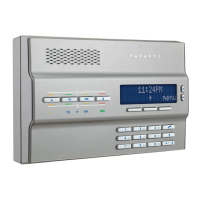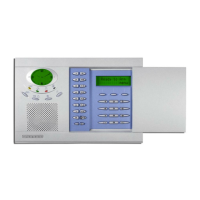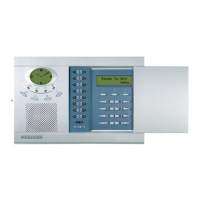MG5000+ / MG5050+ Installation Guide
31
Programming the Remote Control Buttons
Sections [611] to [642]: Remote Controls 1 to 32 respectively.
Each remote control can be programmed to perform up to 4 different actions. Each digit in sections [611] to [642] represents a button or combination of buttons.
Digits 1 through 4 can be programmed, while digits 5 through 8 are reserved for future use and must be defined as empty (reminder: [SLEEP] = empty).
Warning: When section [610] is accessed, the panel will copy the saved value of that section to all remotes.
How Do I Program the Remote Control’s Buttons?
1. Press the [
ENTER] key.
2. Enter your [
INSTALLER CODE] (default: 0000 / 000000) or [MAINTENANCE CODE] (empty by default)
3. Enter the desired [
SECTION NUMBER] (from sections [610] to [642]).
4. Enter the [
HEXADECIMAL VALUE] (0 to F) of the desired button option from table 2 on page 31 in the appropriate space. If you do
not wish to program a button combination, press the [
SLEEP] key to skip.
Table 2: Button Options
[0] = Button Disabled* [8] = Generate a Panic 1 Alarm
[1] = Regular/Regular Force arming [9] = Generate a Panic 2 Alarm
[2] = Stay/Stay Force arming [0] or [0(10)] = Generate a Panic 3 Alarm
[3] = N/A [
OFF] = Activates any PGMs that have Event Group #08 as their Activation Event
[4] = Sleep/Sleep Force arming [
BYP] = Activates any PGMs that have Event Group #09 as their Activation Event
[5] = N/A [
MEM] = Activates any PGMs that have Event Group #10 as their Activation Event
[6] = N/A [
TBL] = Activates any PGMs that have Event Group #11 as their Activation Event
[7] = N/A
[] = Paramedic alarm
* If you do not enter a value for a button, that button is disabled.
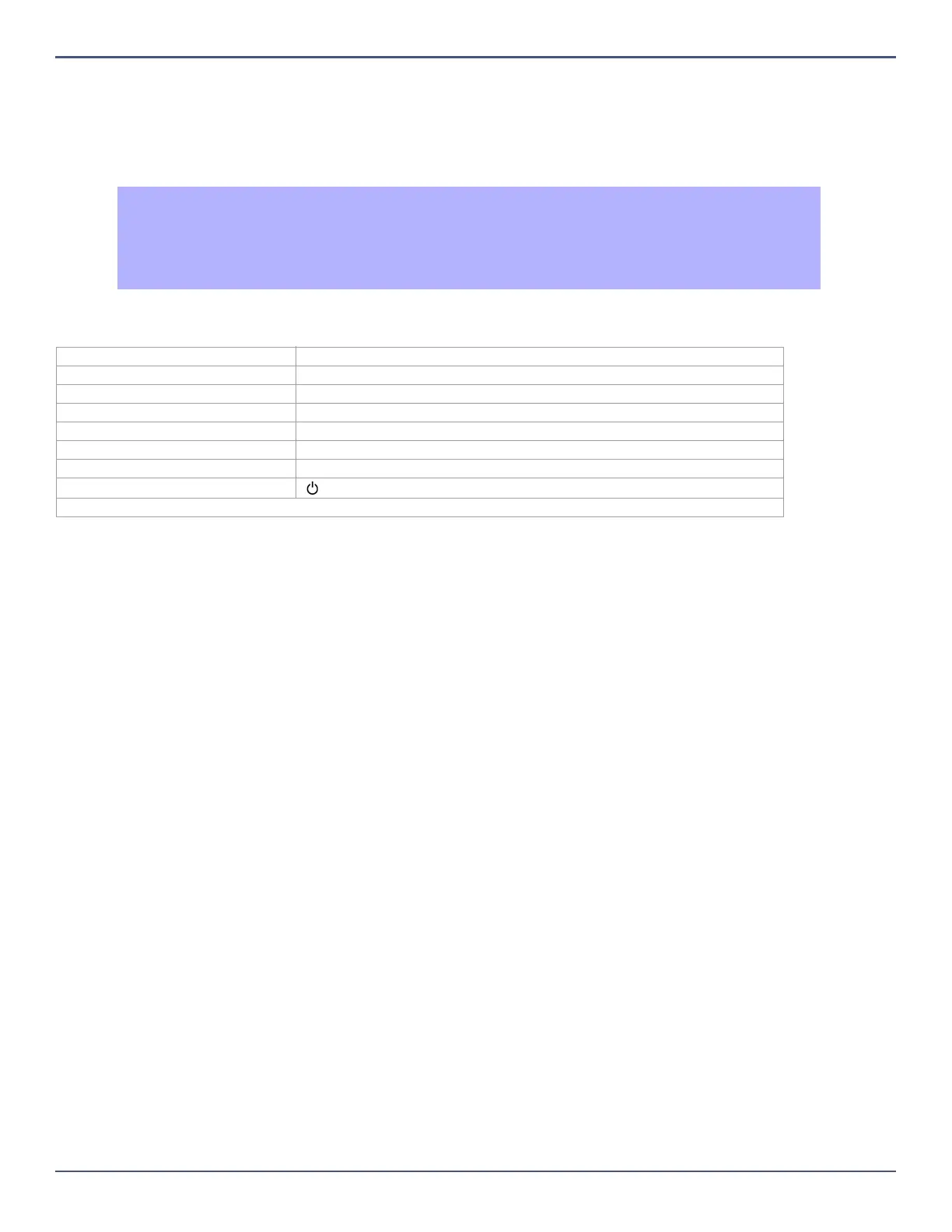